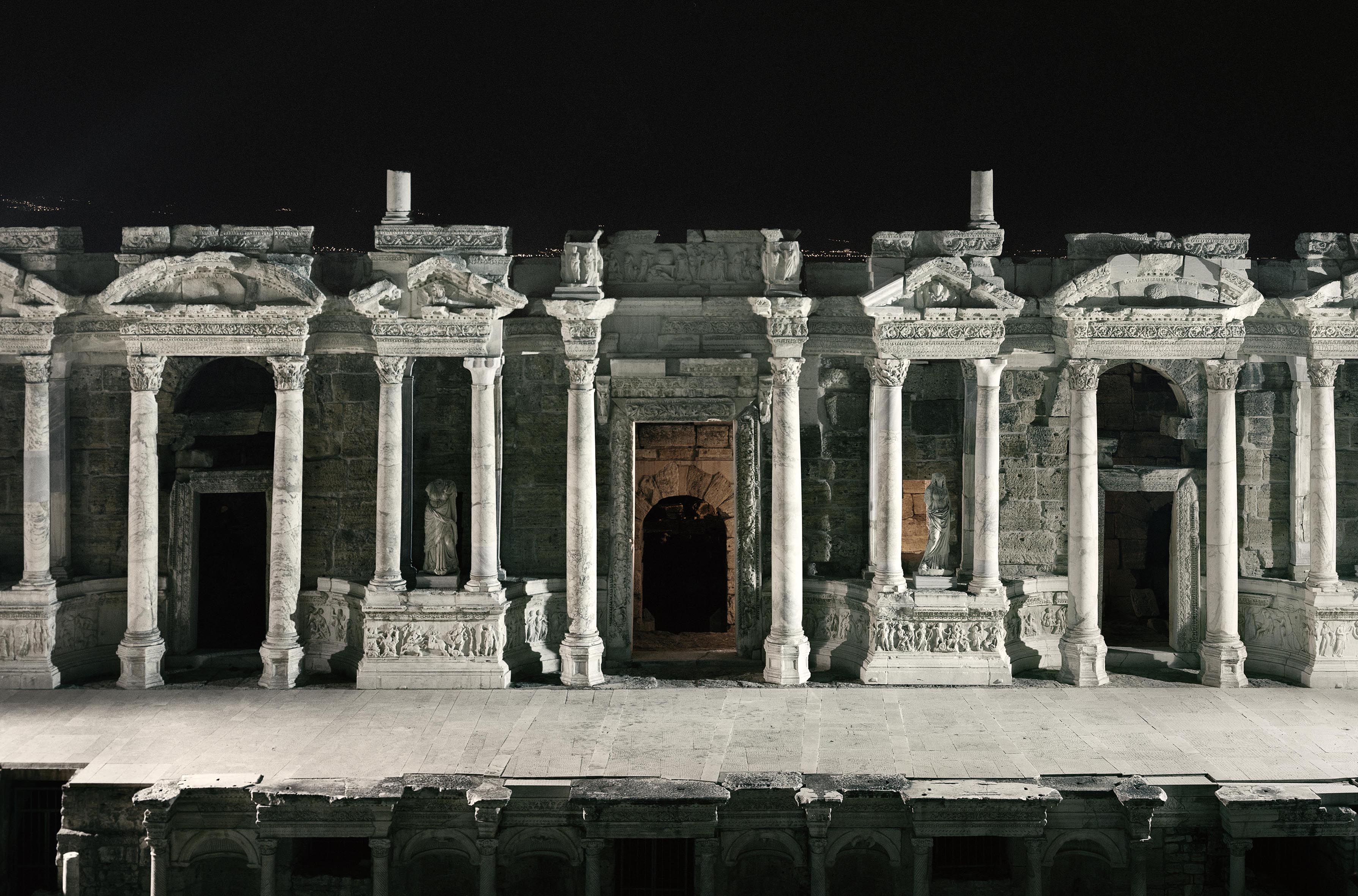Axel Hütte
Axel Hütte (born in Essen in 1951, now living and working in Düsseldorf) is one of the most important and acclaimed contemporary German photographers. He emerged, along with other artists, as a leading figure of the so-called “Düsseldorfer Photoschule” (also known as the “Becher Klasse,” as Hütte himself recalls in the conversation presented here), which gained international recognition from the late 1980s onward. Like Candida Höfer, Thomas Struth, Thomas Ruff, and Andreas Gursky, other well-known members of Bernd Becher’s original group of students at the Düsseldorf Academy, Hütte has exhibited his work in public and private institutions worldwide, and his pieces are included in prestigious museum and foundation collections.
These artists were united by their preference for large-format works, a hallmark that distinguished and propelled contemporary German photography onto the global
stage. Over the years, each has developed a personal artistic approach. While their shared typological approach to reality has its roots in the German tradition dating
back to August Sander and Heinrich Zille, they have each explored the world through photography in different directions. Thomas Ruff and Axel Hütte (who were neighbours on Hansaallee in Düsseldorf) have experimented more than others with the technical aspects of photography, with Ruff adopting digital techniques and Hütte updating old printing methods. They deconstructed and emphasized the pixels of the image and created a new form of contemporary daguerreotype, each following divergent paths in time: Ruff towards the future, and Hütte towards the distant past. Hütte began by exploring urban architecture - such as Berlin’s subway stations in the collection Berlin 1980-1987 - and has consistently focused on cities, including American metropolises in the nocturnal series “After Midnight” (2002-2006). At the same time, he expanded his focus to nature, producing numerous series over his long career featuring subjects such as rainforests, African deserts, lakes in national parks, glaciers, mountain peaks, and Alpine passes. Travelling across continents, Hütte has been “curious to embrace new challenges”. A true world traveller. Thus, when invited by Ahmet Kocabiyik, founder of the Borusan Contemporary center in Istanbul, Hütte created the collection Chronostasis, realized at various archaeological sites in Turkey between 2017 and 2019. For the first time, a rich selection of this work is now being exhibited in Italy at the Bisazza Foundation in Vicenza. Primarily concentrated on the sites of Ephesus, Miletus, Pergamon, Sagalassos, Hierapolis, and Aphrodisias, Hütte’s work (for which he received special permission to shoot during off-hours, without visitors and sometimes at night) presents itself as a personal and deliberate exploration - often progressing by eliminating fields of view. Although marked by the hallmarks of classic documentary photography, it leaves ample room for the viewer due to the immediate evocative power of the images. Whether in large format or in more intimate details, Hütte’s photography conveys an atmosphere
that merges past, history, and the depth of time, almost as if it could be measured and felt. He bestows a magical light on the places he captures, evoking both awe and imagination, much like what Gustave Flaubert must have felt when accompanying Maxime Du Camp on an archaeological documentation expedition in Egypt and the Middle East around 1850. Giving photography the power to evoke emotions and sentiments in the viewer, expanding their vision, is perhaps the most distinguishing feature of Hütte’s style compared to his fellow academy colleagues. This process is rooted in waiting and the ability to absorb a place - a practice Hütte has applied in other works with subjects closer to archaeology (for instance, see the nature architectures of “Towards the Wood” or “Fantasmi e Realtà”). Awareness and contemplation overlap, giving way to the emotions and sensations they evoke. The nighttime diptych of the Celsus Library in Ephesus is a complete example of this creative process and Hütte’s ability to engage the viewer: the frontal shot respects the architecture and simultaneously celebrates the building, its history, and its significance. The lights that animate it from within, along with the large-format diptych presentation, imbue the scene with theatricality and majesty. The initial sense of wonder is quickly followed by reverence and respect. The glass prints - such as Myra, Sagalassos 5, and 6, along with the decorative
motifs of ceremonial halls or private homes - are printed on glass placed in front of a mirror and then onto polished stainless steel. This printing method, reminiscent of the effect of 19th-century daguerreotypes, substantially contributes to surpassing the purely documentary
perspective, rendering the work, almost paradoxically, visionary and yet contemporary, thanks to the technological printing process. The viewer is left disoriented in front of the ambiguity that Hütte intentionally seeks to evoke.
“The truth lies in the eye of the beholder,” Axel Hütte remarked a few years ago.
The truth lies in the eye of the beholder
